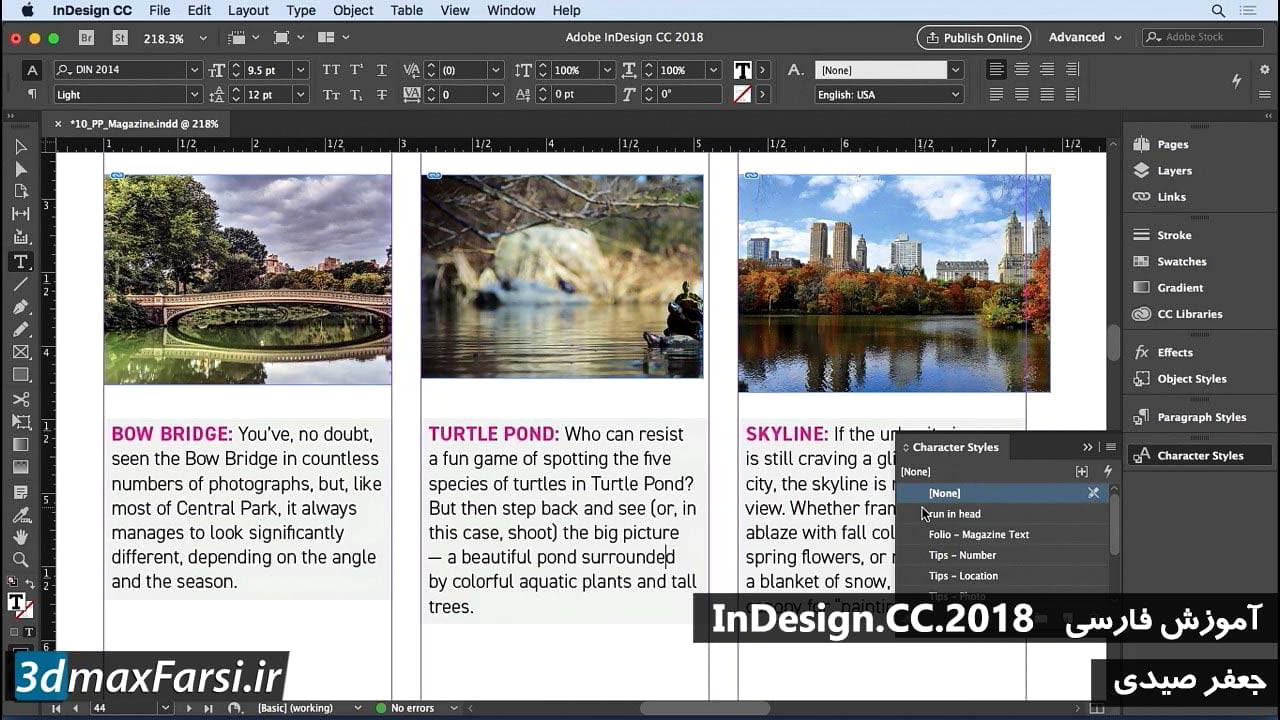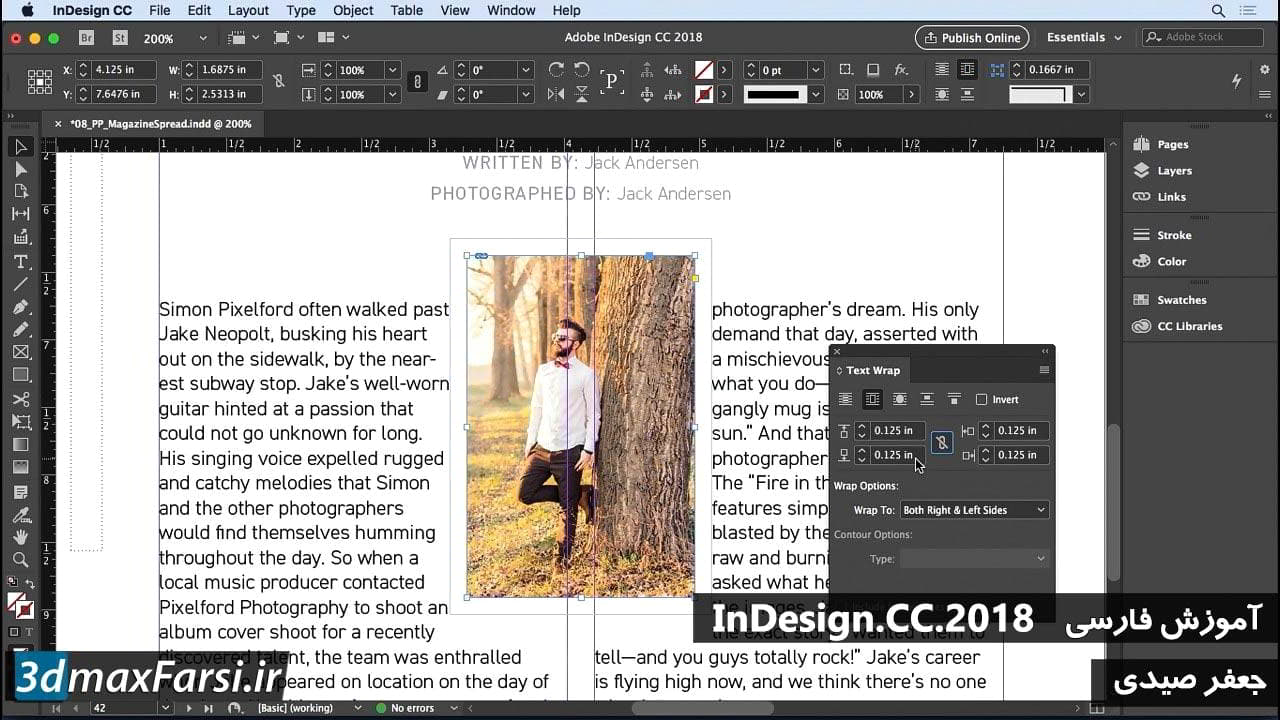آموزش تایپوگرافی ایندیزاین Adobe InDesign Brainstorming with thumbnail sketches

پس از اینکه جلسه اولیه خود را با مشتری خود داشته باشید و تمام جزئیات پروژه را آماده کرده اید، وقت آن رسیده است تا طوفان مغزی را شروع کنید. بهترین راه برای انجام این کار این است که مجموعه ای از اسم های کوچک را بنویسید و بنابراین در این فیلم من می خواهم به صحبت در مورد طوفان مغزی با طرح های کوچک و نحوه انجام این کار را انجام دهم. بنابراین اول و مهمتر از همه، یک ریز عکس چیست؟ خوب، یک تصویر کوچک، اساسا رندر وفاداری کم چیزی است که شما قصد طراحی آن را دارید. این می تواند یک لوگو، یک وب سایت، یک بروشور، یک کارت بازرگانی باشد، شما آن را می نامید، می توانید آن را کوچک کنید، و در واقع یک روند بسیار سریع و آسان است و بسیاری از افراد به روش های مختلفی کمک می کنند. چرا آنها برای پروسه طراحی بسیار مهم هستند؟ به سادگی، ریز عکسها چندین چیز را برای شما به عنوان یک طراح انجام میدهند. شماره یک، آنها به شما کمک می کنند ایده های خود را به صورت فیزیکی بدست آورید. اگر شما چیزی شبیه به من هستید، دقیقه ای که شروع به کار روی چیزی می کنید که شما از طریق سر خود یک میلیون ایده مسابقه می دهید و مگر اینکه شما یک کامپیوتر فوق العاده هستید، واقعا این اطلاعات را حس می کنید. انجام طرح های ریزه کاری یک راه عالی برای به دست آوردن این چیزها در یک ورق کاغذ است. این نیز به شما را مجبور می کند تا ایده های بیشتری بسازید. اگر این برگۀ بزرگ کاغذ را داشته باشید و فقط طرح های کوچکی کوچک را می نویسید، می خواهید آن را با اطلاعاتی که شما می توانید آن را پر کنید، به طوری که آن را به نظر می رسد و به شما کامل است. این همچنین برای کمک به شما در جلوگیری از چیزی است که ما به دید تونل میپردازیم. و این چیزی است که به من بسیار اتفاق می افتد زمانی که من از طریق فرایند ریز عکسبرداری نمی کنم. اگر من فقط از کامپیوتر نشستم و شروع به طراحی چیزی کردم، در این طراحی احساس عاطفی به خود گرفتم. من به آن نگاه می کنم و من فکر می کنم، آره، مرد، شما می دانید چه، من این را داشته ام. من فقط می توانم از آن عبور کنم، من نیازی به ریزه کاری آن ندارم، هیچ چیز، من فقط می روم و آن را انجام می دهم. و با گذشت زمان من با آن روبرو هستم، من واقعا از آن خوشحال نیستم. اما من واقعا نمیتوانم آن را از بین ببرم، چون به این نقطه میرسم که جایی هستم که من درست مثل این مدت زمان زیادی را صرف این کار کردم و واقعا فکر نمیکنم، می دانید، شاید فقط چیزی است که می توانم نیشگون بگیرم برای بهتر شدن But in the long run you're better off not working on one idea, but working on several when you first start out. It's also going to provide you with something I call an ideation vault. Chances are, if you work with one type of client you're going to work with that type of client again. Like let's say a law firm, a real estate agency, whatever the case maybe and you may need to keep some of those ideas that you had over the years. In some sort of vault and this helps you do that, especially if you keep them in physical form. My recommendation is to take all of the thumbnail sketches that you create and keep them as both a physical copy and then also scan them back into your computer and keep those in some way shape or form. This is going to help you down the road when you get to one of those times when you inevitably run into what we call the wall and this is going to help you break through that wall. All right. Let's go through some of the basics of what I do when I start to sketch. The first thing that I do is I break out my sketchbook. And if you don't have a sketchbook, that's okay. You don't have to have a sketchbook necessarily, but you can just get a piece of paper. It could be as simple as a printer paper or it could be a notebook, spiral-bound notebook. Anything will work, as long as it's something that you can write on and that is free of distractions. So I like clean white paper, the best for that. I also make sure sometimes that I use a template. And I've create my own template that I use for myself many different times and I've included that template inside of this course. So here is what that thumbnail template looks like. And so it's just a basic grid of small thumbnails that I use. I use this for all different types of stuff. This could be a business card, this could be a website, this could be a logo. It lends itself most to projects like logos, icons, small pieces of artwork and things like that but you could create your own thumbnail sketching templates for many different things. You could have a page layout one, you could have a poster size one. Whatever the project is, you could have your own template for that. Now, I've included this free inside of your Exercise Files Folder so I want you to go and grab this and make sure that you have a couple copies of it printed out because as we continue to go throughout this course, you're going to need this, especially when we get to the challenge in this chapter. You're going to need this specific thing. Printed and ready to go so that you can get the ideas cranking in your head about what you're going to do when I give you the project to work on. So here are some tips when you're creating your sketches. Number one: only spend about one to two minutes on each sketch, maybe not even that long; one minute might be the tops. You just need to quickly sketch out a rough idea. Remember, you need to just create it and move on. Don't spend too much time with it because, in the end, details do not matter. This is a low fidelity basic shape, basic line version of whatever it is that you're trying to create. And you also don't need to be repetitive, either. When you get stuck in a repetitious pattern, where you're just going through and drawing the same thing, that's when it's time to take a break and start writing things down verbally. So, you say, okay, I want this type of element, this type of element, here's an idea, here's a thought, and that's going to help you kind of spark those little ideas that are going to help you translate those into thumbnail sketches. And finally I want you to always fill up the page, don't just stop at 3-5 sketches. That page that I showed you awhile ago has something like 20 some odd sketches on it. I want you to fill that thing up. I want you to even experiment farther than that. Fill up two sheets, three sheets, four sheets. However many ideas you have floating in that head of yours, I want to you go ahead and sketch out all of those ideas. Because only then will you be able to truly, truly commit to the one single design. Because you'll be able to weed out through all the bad stuff. My mantra when it comes to thumbnails is that they allow your eyes to breath and your imagination to run free. So give your eyes a break and let your imagination do what it's meant to do, create amazing stuff.

